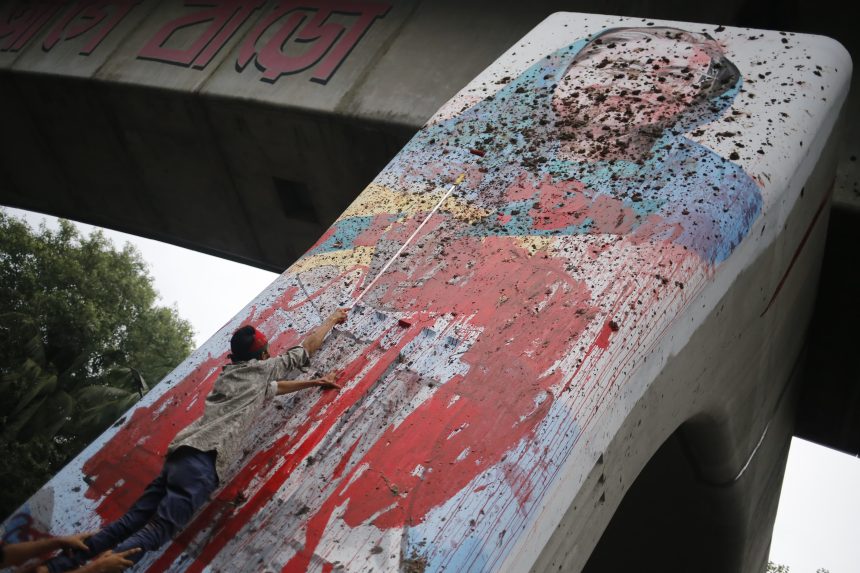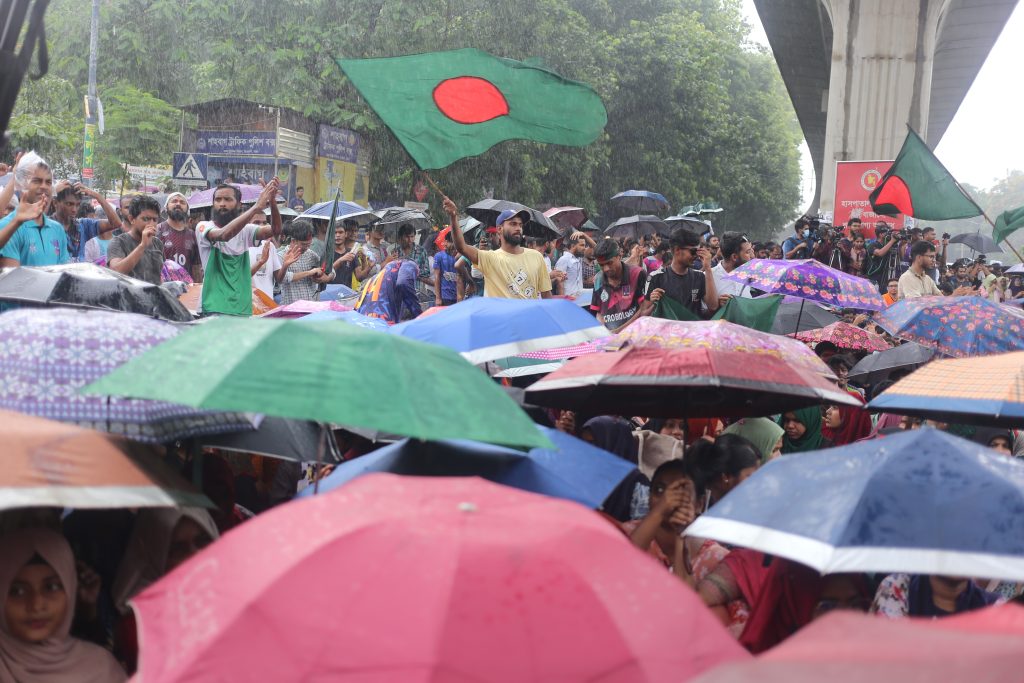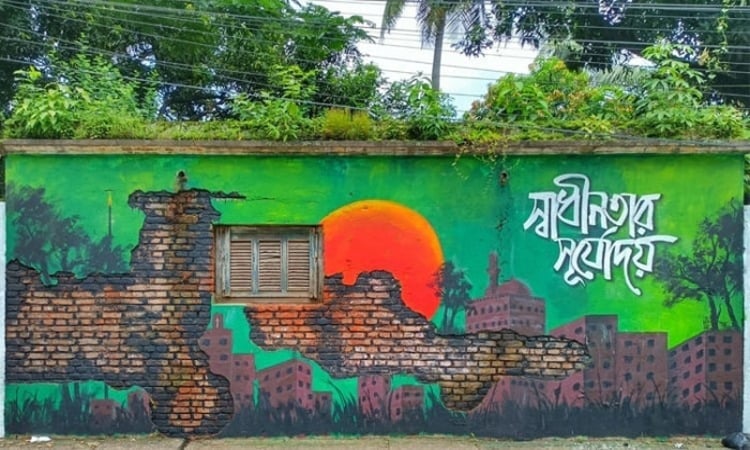In a stunning culmination to one of the largest mass uprisings in Bangladesh’s history, Sheikh Hasina resigned on August 5,2024, ending a 16-year authoritarian rule.
What began as a student-led protest over a controversial government job quota system evolved into a full-scale nationwide uprising, marked by violence, mass arrests, and the deaths of over 1,500 people.
Here’s a detailed chronology of the events that led to the dramatic collapse of Hasina’s government:

June 5–July 1: The spark:
On June 5,2024, the High Court invalidated a 2018 circular that upheld a quota system reserving 56% of government jobs. Students, dissatisfied with the government’s appeal to the Supreme Court, reignited long-standing discontent by demanding executive action. Although protests paused briefly for Eid-ul-Adha, tensions simmered.
July 1–5: The movement gained momentum:
Students resumed demonstrations on July 1, 2024, setting July 4 as the deadline to abolish the quotas. When the Appellate Division upheld the High Court verdict on July 4, the protests intensified nationwide. On July 5, the ‘Anti-Discrimination Student Movement’ called for class boycotts and road blockades.
July 6–10: The ‘Bangla Blockade’:
The country witnessed a wave of disruption from July 6 as students blocked highways and intersections across Dhaka and other major cities. By July 9, demonstrations spread to remote districts. On July 10, the Supreme Court imposed a four-week status quo on quotas, which failed to calm the protests.
July 11–15: Violence and escalation:
The government’s rhetoric hardened. On July 11, ministers labeled the protests illegal, and by July 12, clashes erupted between the pro-government student wing Chhatra League and protesters. On July 15, Dhaka Medical College Hospital was attacked, injured demonstrators were beaten, and dormitories were taken over by pro-govt students organisations. Over 300 students were injured that day alone.
July 16–20: Bloodshed and shutdown:
Clashes intensified. On July 16, six students were killed in major cities. As news of Abu Sayeed’s death went viral, students seized university dormitories. On July 18, protesters enforced a nationwide shutdown. Violence spread to 47 districts; 29 people were killed, over 1,500 injured. The government deployed the army and imposed a nationwide curfew on July 19 after 103 deaths were reported.

July 21–23: Judicial verdict and resistance:
On July 21, the Supreme Court abolished most quotas, but the movement continued. The student movement accused the government of trying to deflect blame. The government began arresting protest leaders. Broadband was restored, but social media remained restricted.
July 24–28: Crackdowns and controversy:
Student leaders disappeared and were later released under suspicious circumstances. On July 28, the six detained leaders appeared in a video statement announcing withdrawal of protests claim swiftly rejected by other leaders as coerced. Crackdowns continued. Over 9,000 were arrested nationwide.
July 29–31: Defiance grows:
Demonstrations resumed, joined by teachers and guardians. The Cabinet declared a “day of mourning”, but students staged symbolic protests instead. On July 31, protests were held across court premises, leading to clashes and arrests.
August 1–4: Final showdown:
The government banned Jamaat-e-Islami, social media blocks returned, and clashes escalated. On August 4, the deadliest day, at least 91 people died, including 14 police officers. Protesters stormed police stations, ruling party offices, and highways. An indefinite curfew was declared that evening. Hasina condemned the protesters as “terrorists”, while the people vowed to march to Dhaka.
August 5: Hasina resigns:
Defying curfew, thousands marched on Dhaka. Protesters stormed the Ganabhaban, forcing Hasina to resign and flee to India with her sister. Army chief General Waker-uz-Zaman announced an interim government and met with political leaders to chart a democratic transition.
The collapse of Hasina’s rule was not just the result of a failed policy, but a manifestation of deep-rooted frustration over authoritarianism, suppression of dissent, and lack of democratic accountability. As the nation begins healing, the road ahead will test Bangladesh’s commitment to democracy, justice, and reconciliation.


